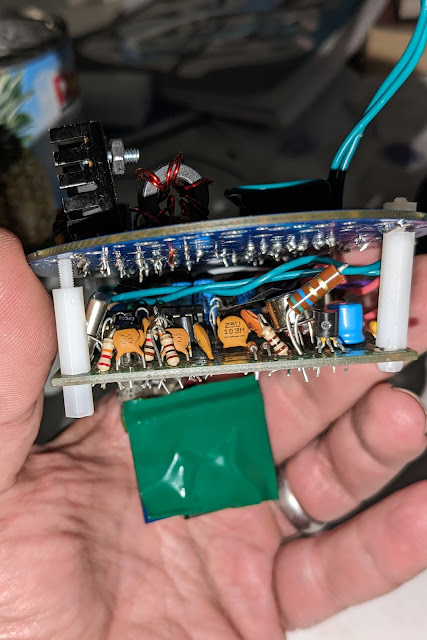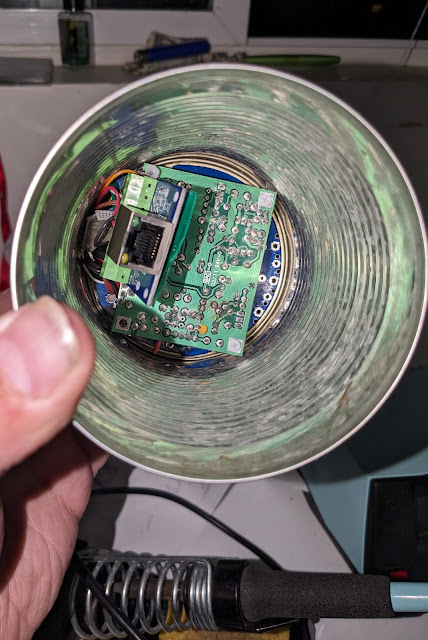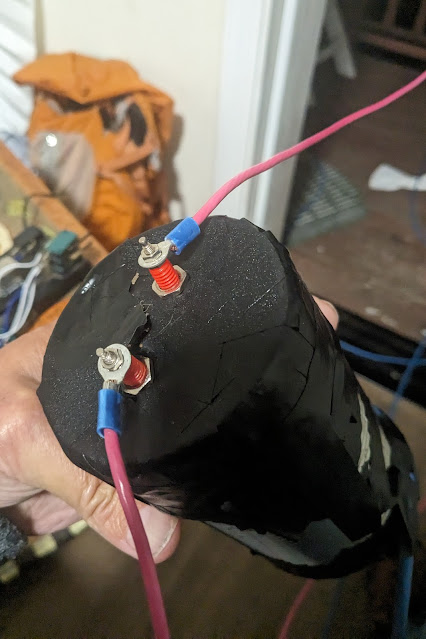Hello, and welcome to the Project TouCans intro page!
Latest Outings
Update!
Project TouCans is now completely wireless! There's no feedline. At. All. There are also no lines for the keyer controls or the power supply. Everything Project TouCans needs it takes with it up into the antenna. Here's a recent photograph of the rig.
Project TouCans is the integration of a RockMite with a Tuna Topper amplifier. Both circuit boards are housed in a Dole pineapple can while the tuna can the Tuna Topper ships in is used for a lid and antenna mount. Hence, Project TouCans, ('cause there's two cans... get it... hehehehe.) Also, the rig is housed in the antenna, so it's a flying rig, so, once again, Project TouCans! The rig completely assembled delivers a QRP maximum 5 Watts directly into the antenna.
KO6BTY explains:






As you can see, originally TouCans was powered by D cells, but before long KO6BTY and I figured out that we could use a USB-C power brick.
Here's a list of the entries in this blog about Project TouCans.




Comments
Post a Comment
Please leave your comments on this topic: